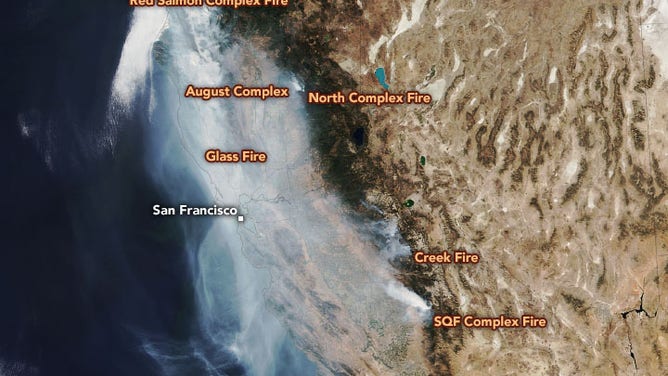Smoke from intense wildfires can lead to large reductions in solar power generation, scientists say
Scientists said smoke led to energy production predictions that were up to 50 percent off target. The 2020 wildfire season was the worst in memory for the western U.S., with more than 10 million acres burned.
Wildfire smoke impacts hail events
Heat and aerosols from wildfires in the West can impact severe storms in other regions of the country, a new study says
Scientists believe smoke produced by major wildfires not only reduces visibilities and air quality but also has the potential to significantly impact solar power intake to the degree that production forecasts drastically miss expected benchmarks.
The National Center for Atmospheric Research recently released a study that stated power production was reduced upwards of 30 percent during the 2020 firestorm that ravaged parts of California.
More than 4 million acres were burned, but what scientists honed in on during the years after was the lack of sunlight due to ash and thick smoke.
Satellites captured stunning images of the western U.S. socked under a brown, milky layer but underneath the plumes were solar power generation facilities.

Smoke from 2020 wildfires
(National Center for Atmospheric Research (NCAR) / FOX Weather)
During days of heavy smoke, the study reported energy production averaged 27 percent less than forecast and peaked as much as 50 percent below expectations during times of increased demand.
Experts said this was the case, especially during early and mid-September when the August Complex Fire ravaged parts of Northern California, sending smoke southward of large parts of the region.
CALIFORNIA ASKS RESIDENTS TO AVOID CHARGING ELECTRIC CARS AMID INTENSE HEAT WAVE
An increase in aerosols leads to more light scattering and reduces the amount of sunlight that is able to reach the Earth’s surface.
"The key takeaway from this research is that wildfire smoke can have a substantial and negative impact on solar energy production in areas near major wildfires," Timothy Juliano, lead author and NCAR scientist, said in a statement.
Scientists are concerned about the growing acreage each year consumed by wildfires, which could triple by 2050, and impact vast parts of the country.
"Over the course of an entire burning season, the effects of a week-long period of very smoky conditions may not seem so deleterious to the power grid. Nevertheless, a direct consequence of climate change is continued extreme biomass burning, which may lead to more frequent and intense smoke events," the authors stated.
WESTERN WILDFIRES IMPACT SEVERE STORM OUTBREAKS IN CENTRAL US, STUDY WARNS
NCAR scientists suggested that with the advancement of forecast models, the solar power sector should consider potential shortfalls when air quality is reduced.
The U.S. Energy Information Administration estimates that just shy of three percent of the country’s 4.11 trillion kilowatt-hours is produced by solar energy farms.
The share of renewable energy from solar is higher in areas of the Sun Belt – including California – where climates usually lead to sunnier days and higher productivity levels.
"Given the increase in large wildfires and society’s greater reliance on solar energy, even regions far downwind of fires may need to consider the potential impacts of smoke," Juliano stated.
